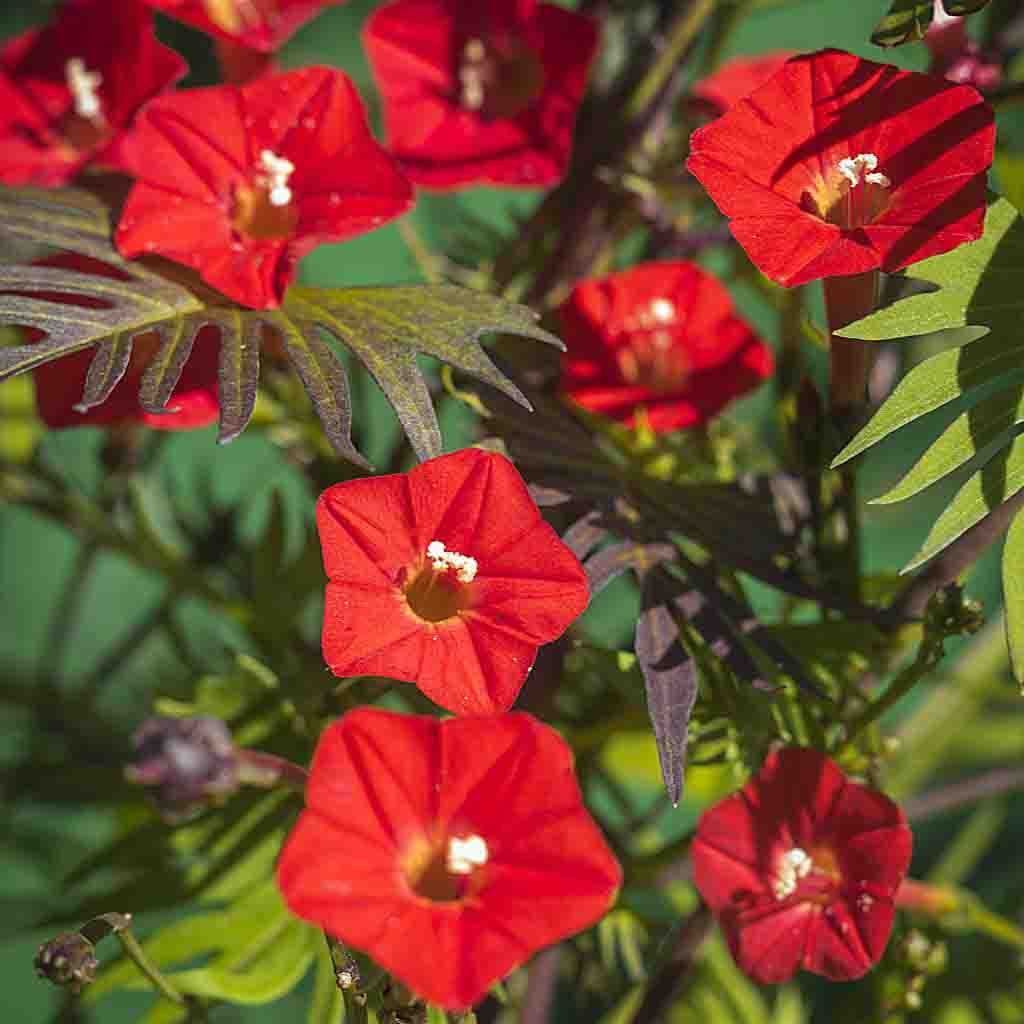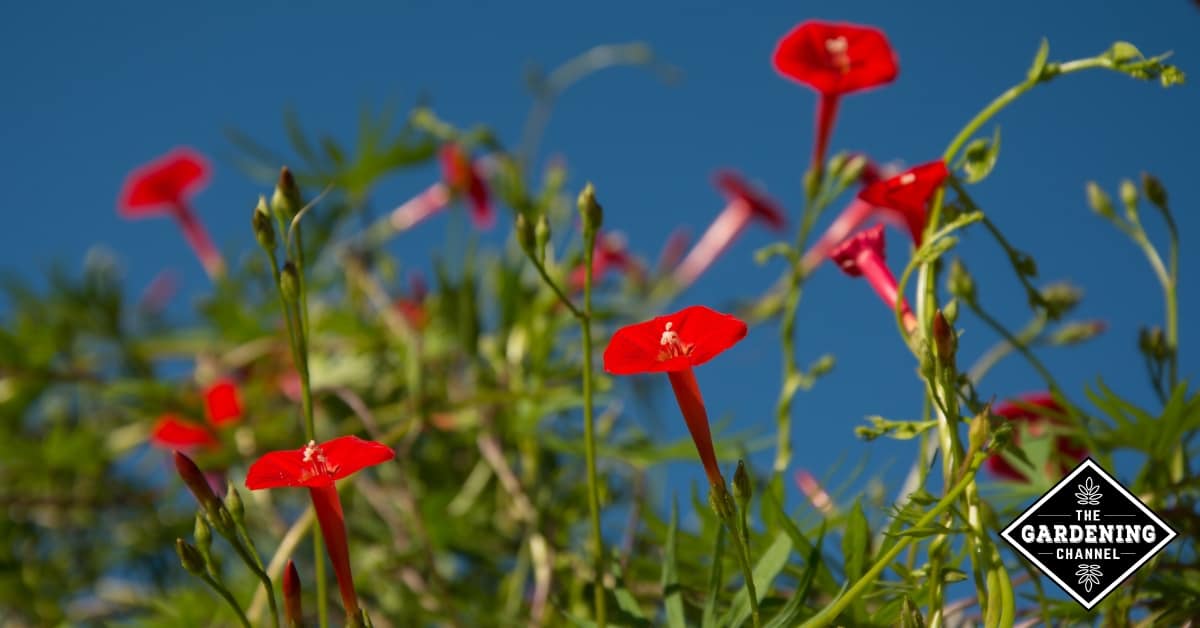Grow Cardinal Climber for Spring to Frost Color
In the world of gardening, few plants can rival the breathtaking beauty of the Cardinal Climber (Ipomoea sloteri). Its vibrant, trumpet-shaped flowers and lush green foliage make it a favorite among horticulturists. If you want to transform your outdoor space into a colorful paradise from spring to frost, this is the plant for you. In this comprehensive guide, we will delve into the intricacies of growing and caring for Cardinal Climber to ensure your garden remains a riot of color throughout the growing season.
Understanding Cardinal Climber

Before we dive into the nitty-gritty of cultivating Cardinal Climber, let’s take a moment to understand this striking plant. Cardinal Climber, scientifically known as Ipomoea sloteri, is a member of the morning glory family. Native to Mexico, it’s an annual vine that can reach heights of 10 to 15 feet, making it a perfect choice for trellises, fences, and arbors.
Cardinal Climber derives its name from its vibrant red, trumpet-shaped flowers that closely resemble the plumage of a cardinal bird. These flowers typically measure around 2 inches in diameter and create a stunning contrast against the plant’s deep green, heart-shaped leaves.
Planting Cardinal Climber

Choosing the Right Location
To ensure the Cardinal Climber thrives in your garden, it’s crucial to select the right location. This plant requires full sun to achieve its maximum potential. So, find a spot in your garden that receives at least 6 to 8 hours of direct sunlight daily.
Soil Preparation
Cardinal Climber isn’t too finicky about soil type, but it does best in well-drained, fertile soil. Before planting, work some compost into the soil to improve its fertility and drainage. This will provide a solid foundation for your Cardinal Climber to grow healthy and vibrant.
Sowing Seeds
Cardinal Climber is commonly grown from seeds. You can either sow the seeds directly into the garden soil or start them indoors and transplant later. For early spring blooms, it’s a good idea to start the seeds indoors about 6 to 8 weeks before the last frost date in your region. Plant the seeds about 1/4 inch deep in individual containers.
Transplanting
Once the threat of frost has passed, and your Cardinal Climber seedlings are a few inches tall, it’s time to transplant them into your garden. Space them about 6 to 8 inches apart, as they’ll need room to spread their vines.
Caring for Your Cardinal Climber

Watering
Cardinal Climber prefers consistently moist soil, so make sure to water it regularly, especially during dry spells. Be cautious not to overwater, as soggy soil can lead to root rot. A layer of mulch around the base of the plant can help retain moisture and keep the soil cool.
Fertilization
Fertilize your Cardinal Climber every 4-6 weeks with a balanced, all-purpose fertilizer. This will provide the necessary nutrients for robust growth and prolific flowering.
Pruning
Cardinal Climber can be a vigorous grower, and to maintain its shape and encourage more blooms, occasional pruning is essential. Trim back any dead or overgrown vines to keep the plant looking tidy and vibrant.
Supporting the Vines
Since Cardinal Climber is a vine, it will need support to grow vertically. Install trellises or other structures for the vines to cling to, allowing them to reach their full height and potential.
Pest and Disease Control
Keep an eye out for common garden pests like aphids and spider mites, which can occasionally trouble Cardinal Climber. Treat any infestations promptly with the appropriate insecticides. Additionally, ensure good air circulation around the plant to prevent fungal diseases.
Enjoying Cardinal Climber’s Colorful Display

Cardinal Climber’s striking red flowers are truly a sight to behold. From spring to frost, these beautiful blooms will add a burst of color to your garden, attracting pollinators like butterflies and hummingbirds. You can also use Cardinal Climber in container gardening to decorate your patio or balcony.
By following these guidelines and providing the right care, you’ll be rewarded with a splendid display of red blossoms that will make your garden the envy of the neighborhood. Cardinal Climber is a versatile and low-maintenance plant, making it an excellent choice for gardeners of all levels of experience.
So, if you’re looking to bring a touch of elegance and vivid color to your garden throughout the growing season, consider adding Cardinal Climber to your landscape. With its rich red blooms and lush green foliage, it’s a true showstopper. Get ready to enjoy a garden bursting with color from spring to frost!
FAQs about Cardinal Climber

Q1: Is Cardinal Climber easy to grow?
A1: Yes, Cardinal Climber is relatively easy to grow, making it a popular choice among garden enthusiasts.
Q2: Can I grow Cardinal Climber in a container?
A2: Absolutely! Cardinal Climber can thrive in containers, making it suitable for smaller spaces and patios.
Q3: How often should I water Cardinal Climber?
A3: Cardinal Climber prefers consistently moist soil, so water it regularly, especially during dry spells.
Q4: When can I expect the first blooms from my Cardinal Climber?
A4: With proper care, you can expect your Cardinal Climber to start blooming in early to mid-summer and continue into the fall.
Q5: What is the average height of a mature Cardinal Climber plant?
A5: A mature Cardinal Climber can reach heights of 10 to 15 feet, especially when grown with proper support.
tag
- chicken feed
- how to Keep Chickens Off Your Porch
- How to grow oyster mushrooms at home
- Growing Kale in Pots


0 Comments